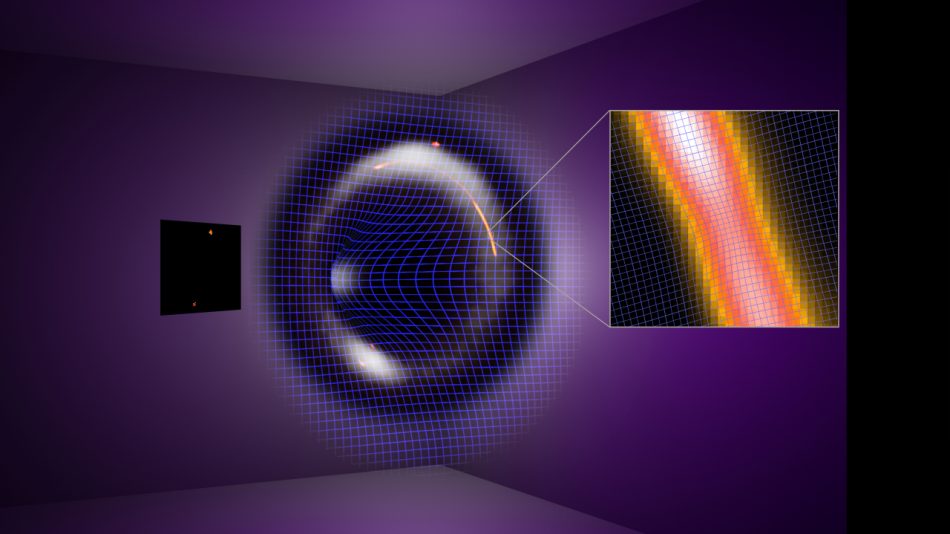
Something massive is lurking in the darkness of space, a mysterious object with the weight of a million Suns but no light to give it away.

In 2007, astronomers discovered the Cosmic Horseshoe, a gravitationally lensed system of galaxies. New research reveals the presence of an Ultra-Massive Black Hole in the foreground galaxy with a staggering 36 billion solar masses.

Taking advantage of a cosmic "double lens," astronomers resolved more than 40 individual stars in a galaxy so far away its light dates back to when the universe was only half its present age.

A newly discovered cluster-scale strong gravitational lens, with a rare alignment of seven background lensed galaxies, provides a unique opportunity to study cosmology.

The “Einstein cross” pattern comprises four images of a distant supernova created by the gravitational lensing of its light as it passed a distant galaxy within a cluster of galaxies on its way to Earth.

A UK team of astronomers found an ultramassive black hole, an object over 30 billion times the mass of our Sun, in the foreground galaxy – a scale rarely seen by astronomers.

Way back in 1979, astronomers discovered that cluster's mass distribution formed a lens that distorted the light. Now EU astronomers have spotted time delaying effect with another distant quasar.

NASA's James Webb Space Telescope has produced the deepest and sharpest infrared image of the distant universe to date. Known as Webb'nas First Deep Field, this image of galaxy cluster SMACS 0723 is overflowing with detail.

The team detected the blue supergiant star — which shone when the universe was just one-third its current age — with the help of both the Hubble Space Telescope and gravitational lensing.

An international team of astronomers has discovered one of the most extreme instances of magnification by gravitational lensing.

Dark Energy Survey scientists unveiled the most accurate measurement ever made of the present large-scale structure of dark matter in the Universe.

Thanks to an amplified image produced by a gravitational lens, and the Gran Telescopio CANARIAS a team of scientists have discovered one of the brightest galaxies known.

Analyzing a galaxy through a gravitational lens, astronomers obtained images 10 times sharper than Hubble could see on its own.

By using a space-time quirk first predicted by Einstein, the Hubble Space Telescope has also made it clear that our theories to explain the evolving universe are far from complete.

Astronomers have used gravitational lensing to detect an incredibly faint early-universe galaxy 13 billion light years away.